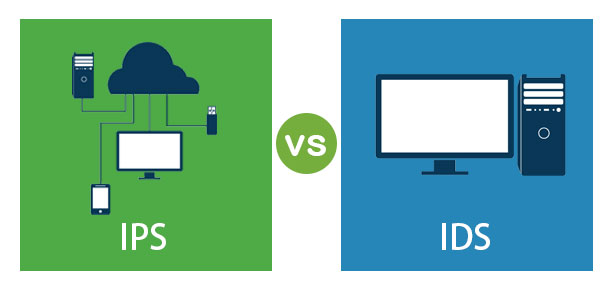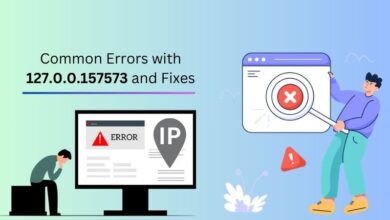The Key Differences Between IDS and IPS – Which One Should You Choose?

IDS systems monitor network traffic and detect performance irregularities, while IPS solutions incorporate response capabilities. If it detects a potential threat or unauthorized activity, an IPS solution will automatically take action to prevent the threat from spreading further.
This can include shutting down a device, blocking incoming and outgoing traffic, examining ongoing processes, and monitoring system logs. This automation is key for highly digitalized enterprise environments.
Cost
In many ways, IDS vs IPS are similar tools to keep bad actors from accessing your network. Both scan network traffic and compare it to a database of known threats, flagging any suspicious behaviors. Both also generate alerts if an attack is detected. Where they differ is in what happens next. An IDS only alerts when a potential threat is detected. Then it’s up to the IT security team to determine whether an action needs to be taken.
Unlike an IDS, an IPS will take action against an identified attack without human intervention. An IPS can drop or block traffic based on configured rules and policies to prevent the threat from spreading.
However, IPS solutions can be expensive because they require hardware to monitor networks and storage capacity for logs and packet captures. Additionally, IPS solutions are vulnerable to the same attacks they’re designed to protect against.
For example, if an attacker uses weak authentication or passwords to gain access to your network, then the IPS will have trouble recognizing this activity. Additionally, because IPS solutions analyze packets and depend on the identifiers they detect, these tools are susceptible to protocol-based attacks such as invalid data and TCP/IP stack attacks.
Detection Capabilities
IDS is a passive system that analyzes network traffic via span or taps technology to identify potential threats and then raises alerts. It relies on signature detection to scan and compare network packets against a library of known cyber threats, which must be updated regularly to keep up with the latest attack patterns. This can lead to false positives as a new threat could be missed if the signature hasn’t been added to the database yet.
IPS monitors incoming and outgoing network packets to detect real-time threats. It uses several methods to recognize a possible threat, including signature-based IPS, which compares current network activity against a pre-programmed baseline norm and alerts on any deviation. Network behavior analysis and anomaly detection are other popular methods. However, these tools can be slow to respond and require human intervention, making them less effective as a proactive defense tools.
An IPS goes one step further than an IDS by proactively blocking any detected threats to prevent them from reaching the protected systems. IPS solutions can also enforce security policies at the enterprise network level, allowing companies to protect sensitive customer data like names and addresses and other assets like intellectual property or proprietary business information. This type of protection can be challenging, as IPS solutions are susceptible to false positives and negatives, which can block legitimate traffic or allow attackers in.
False Positives
IDS and IPS tools can be useful for monitoring the network, but they’re only effective when their alerts are used effectively. Just like a burglar alarm won’t do much good if it’s blaring all the time, an IDS or IPS that issues many false positive alerts can be incredibly distracting to your security team.
False positives can occur when a threat detection tool finds anomalous but acceptable behavior to be a threat, or they can be caused by misconfigured security systems that allow unauthorized traffic into the system. A reliable IDS should be able to tune itself out of false positives, and the more sophisticated the detection tool is, the lower the error rate will be.
Another problem that can arise from an IDS is that it won’t detect all threats, particularly when a malicious actor uses encryption to hide their activity. This can lead to attacks that bypass the IDS completely and go undetected, or it may only be noticed once the bad actor has moved deeper into the network. An IPS can address this issue by allowing the system to block traffic identified as harmful. However, an IPS can deny legitimate traffic and even serious threats if it isn’t correctly configured. This makes it imperative that organizations regularly log and assess their IPS performance to avoid the consequences of an incorrectly tuned IPS.
Integration
A good IDS or IPS should integrate into a broader cybersecurity solution. These tools work best when a network’s policies are incorporated into its detection processes and can be automatically adjusted during an attack. Moreover, it is important to remember that IDS and IPS systems must be regularly updated to recognize new security threats.
An IDS is a monitoring tool that compares network packets against a database of known cyber attack signatures or a normal model of network behavior. When activity resembles an existing threat, the system generates an alert. The IDS can also use anomaly detection to identify patterns that are out of the ordinary. This type of detection is effective at identifying established, less sophisticated attacks, but it can miss zero-day vulnerabilities.
The IDS operates on the network’s edge, meeting the outside world. This makes it vulnerable to the same kinds of attacks that rely on network protocol weaknesses. An IDS can be augmented using tools to expand its understanding of application-layer protocols. A good IDS should be able to capture and analyze large amounts of network data. It is recommended that a company have adequate storage capacity to keep logs and packet captures of potential malicious activity for analysis. When a potential incident is identified, the IDS can notify the SOC to take action or send an automated message alerting users to a possible intrusion.





